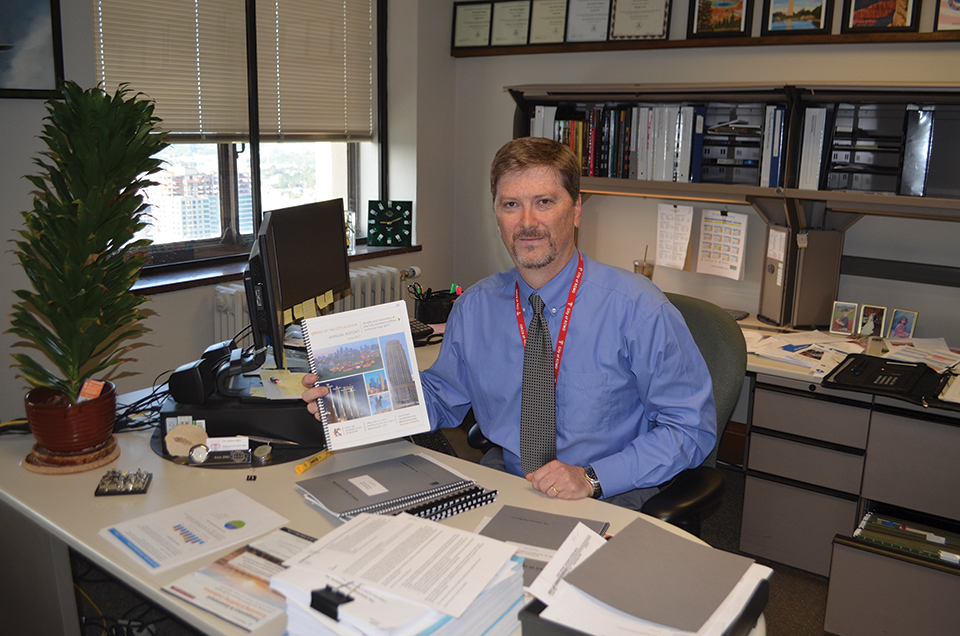Paul Thompson
Northeast News
The City’s Auditor’s office made a potential direct financial impact of nearly $17 million during the City of Kansas City’s 2017-2018 fiscal year, according to the department’s annual report.
KCMO City Auditor Doug Jones presented the report to the City Council’s business session on the afternoon of Thursday, June 7. The report details the financial impact of the six audits the City Auditor’s office compiled during the past year, which considered: 1) the Animal Health and Public Safety Division’s ability to achieve desired outcomes; 2) the General Services Department’s timeliness and accuracy in relation to paying for goods and services; 3) how the City’s arterial street impact fee program could fund infrastructure improvements; 4) the Fire Department’s use of resources in comparison to other jurisdictions; 5) the plan review process of the Land Development Division; 6) and the Parks and Recreation department’s utilization of sustainable practices in the management and maintenance of the City’s natural resources.
Following the presentation, Jones explained to the Northeast News exactly how he came up with the cost-saving figures, both for the direct and indirect financial impact of his department’s audits.
The $17 million direct financial impact is derived through the identification of either increased revenues or decreased costs. According to Jones, those are realized through a combination of one-time cost savings and ongoing revenues that would not have been identified if not for the completion of an audit. Ongoing costs are extrapolated over a handful of years to show the long-term impact of the audit recommendations.
“We identify what the one-year (savings) will be, and then we carry that out for five years to show the potential impact of that direct dollar,” Jones said. “The arterial street impact fee audit revealed the potential for a one-time cost avoidance of $7.6 million, and revenues over five years of $8.6 million. So that’s the bulk of our $17 million.”
Another source of direct financial impact was the General Services audit, which identified errors resulting in double-paying and the payment of late fees that resulted in an $815,000 loss over a five-year period.
In addition to the potential direct financial impact of the office’s work, Jones suggested that the six audits have had a potential indirect financial impact, which have helped the City manage or protect more than $184 million in public monies or assets. The indirect financial impact was tabulated through a system employed by the City of Long Beach. The California city accounted for indirect financial impact by considering the total amount of funds and assets being controlled, managed or protected by the departments being audited in a given fiscal year.
“Now we’re trying to show that there is a value in protecting that asset. They spent $184 million of public money buying goods and services for the City,” Jones said of the departments audited in 2017-2018. “The indirect is really a way to show the value of an audit that’s looking at processes associated with money or assets.”
The value of the City Auditor’s office shouldn’t just be measured in dollars and cents, Jones contends. He believes that the primary value of audit work is accountability and transparency. By shining a light on what the City does with taxpayer money, the public stays informed, the City Council is updated on how things are going and a path is laid out for improvements.
“Then you look at the dollar value of the benefits that we’ve identified,” Jones said.
Jones also highlighted the fact that 99% of his department’s recommendations were agreed to by management. In addition, the implementation of past audits saw an increase over the previous year: In 2017, the City Auditor’s office reported that 73% of the department’s audit recommendations had been implemented by 2017. For this year’s June 7 report, however, Jones said that 92% of his office’s 2016 recommendations had been implemented within a two-year window.
When pressed to name the most substantial audit conducted by his department during 2017-2018, Jones discusses the Land Development Division’s plan review process (“they could take their development someplace else”) and the environmental sustainability of the Parks Department’s resources (“We’re planting more perennials, which require less water and less care”). In terms of public concern, however, the Animal Health and Public Safety audit drew the most attention.
“That was a significant audit dealing with significant issues that the Council had and that the public had about the animal control process in Kansas City,” Jones said. “Implementation of those recommendations should really improve how we do that job.”
Moving forward, the City Auditor’s office has already identified a handful of audit topics for the upcoming fiscal year. Those topics include the Water Services Department’s controls over its inventory, the implementation of City contract selection process recommendations, the accuracy of water meters, the merits of publicly-funded parking garages, the City’s Worker’s Compensation Program, the processes behind employee payroll adjustments and a follow-up report on previous audit recommendations.

















